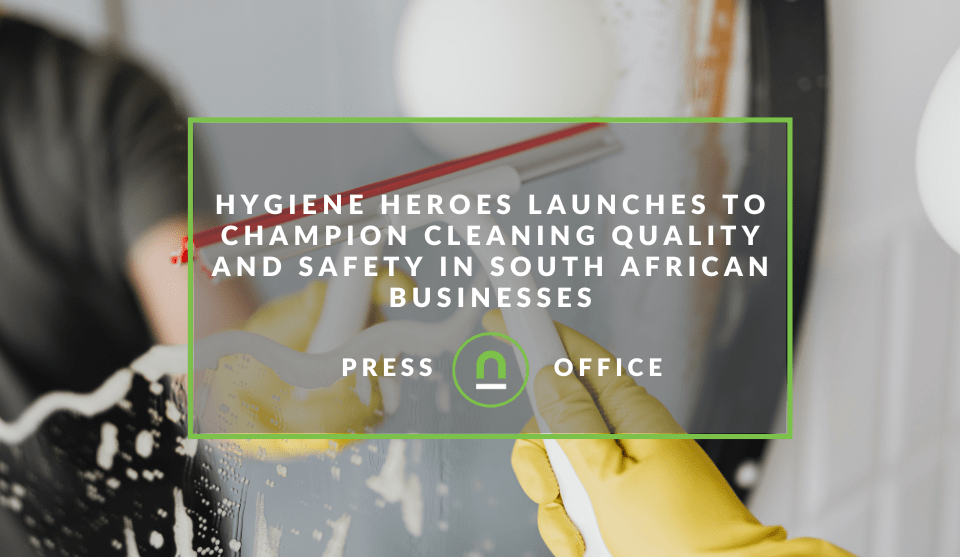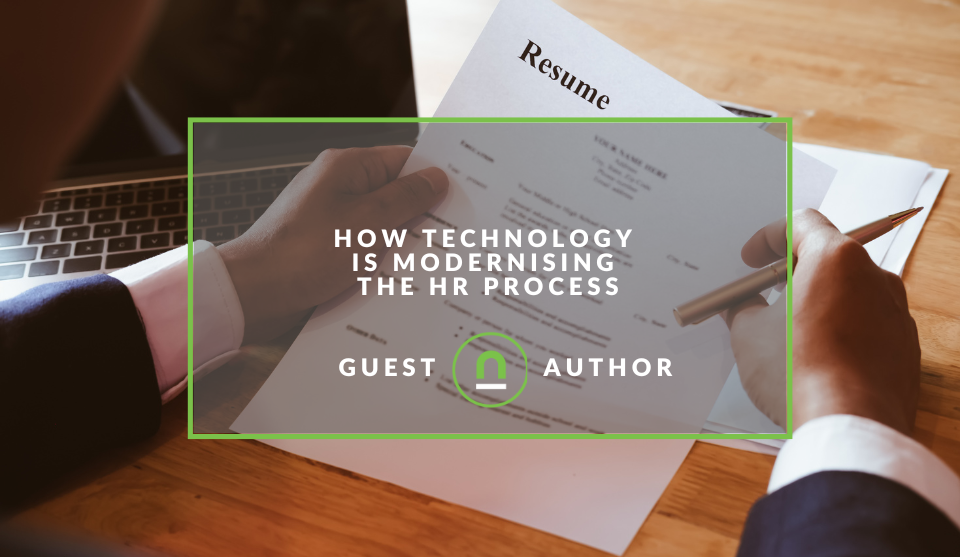Recent posts

nichemarket Advice
How To Pass UTM Tracking To A Third Party Page
10 October 2025

Petrol heads
Tips For Buying A New Car In South Africa
30 September 2025

nichemarket Advice
19 FREE Business Directories In Mexico
27 September 2025

Press Releases
Hygiene Heroes Launches to Champion Cleaning Quality and Safety in South African Businesses
25 September 2025
Popular posts
Extravaganza
Trending Music Hashtags To Get Your Posts Noticed
24 August 2018
Geek Chic
How To Fix iPhone/iPad Only Charging In Certain Positions
05 July 2020
Extravaganza
Trending Wedding Hashtags To Get Your Posts Noticed
18 September 2018
Money Talks
How To Find Coupons & Vouchers Online In South Africa
28 March 2019
How Technology Is Modernising The HR Process
07 September 2023 | 0 comments | Posted by Dea Muric in Talent Agents
In the contemporary age, human resources (HR) has undergone a profound metamorphosis, driven significantly by groundbreaking technologies. Artificial intelligence (AI), machine learning, data analytics, and cloud-based systems have ushered in a revolutionary shift in HR practices, resulting in enhanced efficiency, optimised operations, and a prominent emphasis on data-driven methodologies.
This article explores the profound effects of these technological advancements on elevating productivity and nurturing a flexible and resilient workforce.
The Impact of Technology on the Recruitment Process
The heartbeat of any organisation lies in recruitment, and technology has been instrumental in transforming this fundamental process. AI-powered recruitment tools have enabled HR departments to source, screen, and shortlist candidates more effectively. Machine learning algorithms reduce the time and effort spent on manual screening since they can:
- Analyse large volumes of data;
- Identify patterns and;
- Match candidates with job requirements.
Additionally, data analytics has enhanced the recruitment process by providing valuable insights into the effectiveness of sourcing channels and candidate selection criteria. HR professionals can now make data-driven decisions to optimise their recruitment strategies and ensure they attract the right talent.
One notable technology that has contributed significantly to modernising the recruitment process is Streamline Verify compliance solutions. By seamlessly integrating their cutting-edge compliance platform with HR systems, companies can efficiently verify and manage employee credentials and background checks.
This integration not only streamlines the verification process but also ensures regulatory compliance, offering a comprehensive solution to the challenges faced during recruitment.
Transforming Employee Onboarding
Effective employee onboarding sets the foundation for a successful employee experience. Technology has enabled HR departments to create a seamless onboarding process that helps new hires integrate into the organisation faster and more efficiently.
Cloud-based onboarding platforms provide a centralised repository for all necessary paperwork, training materials, and company policies. This ensures that new employees have easy access to essential information from day one, saving time and reducing administrative burdens.
Furthermore, HR teams can use AI-driven chatbots to answer common queries and assist new hires throughout the onboarding journey, creating a more personalised and engaging experience.
Revolutionising Performance Management
Traditional performance management systems often rely on annual reviews and subjective evaluations. Technology has introduced more continuous and data-driven performance management processes, enabling real-time feedback and goal tracking.
Performance management software leverages data analytics to assess employee performance based on key metrics and objective criteria. This approach not only provides a more accurate evaluation but also identifies areas for improvement and development.
Through using technology to support performance management, organisations can foster a culture of continuous improvement and encourage employees to take ownership of their development.
Enabling Talent Development
Investing in talent development is crucial for employee retention and organisational growth. Advancements in technology have paved the way for enhanced learning and growth, granting unprecedented accessibility to knowledge at any time and in any place.
Modern e-learning platforms and learning management systems (LMS) offer employees seamless access to an extensive array of training materials, diverse courses, and valuable resources. AI-powered LMS platforms can even recommend personalised learning paths based on an individual's interests, career goals, and performance data.
Furthermore, technology enables organisations to track the progress of their employees' learning journeys, providing valuable insights into the effectiveness of training programs. This method of talent development, driven by data, ensures employees receive appropriate training precisely when needed, ultimately fostering their professional growth and success.
Enhancing Employee Engagement
Employee engagement is crucial for maintaining a motivated and productive workforce. Technology has offered innovative ways to measure and improve engagement levels within an organisation.
Pulse surveys and sentiment analysis tools help HR professionals gauge employee satisfaction and identify potential areas of concern. By gathering regular feedback, organisations can take proactive measures to address issues and create a more positive work environment.
Collaboration tools and communication platforms have also transformed the way employees interact with each other and with management. These tools facilitate seamless communication, even for remote or geographically dispersed teams, fostering a sense of belonging and inclusivity.
Embracing Data-Driven Decision Making
One of the most significant advantages of technology in modernising HR processes is the shift towards data-driven decision-making. HR departments now have access to vast amounts of data, ranging from employee performance metrics to engagement surveys and recruitment analytics.
Through the utilisation of this data, organisations can acquire valuable insights into their workforce, enabling them to make well-informed decisions that foster positive impacts on business outcomes.
HR professionals can utilise data analytics tools to discern patterns, trends, and correlations within the workforce, revealing vital insights that might have remained unnoticed otherwise.
For example, organisations can use data analytics to determine which factors contribute to high employee turnover and take proactive steps to address these issues, such as:
- Improving workplace culture;
- Offering competitive benefits or;
- Providing targeted training and development opportunities.
Moreover, technology has enabled HR teams to predict future workforce needs and design proactive strategies to address potential talent gaps. When using predictive analytics, organisations can forecast attrition rates, anticipate skill shortages, and plan succession management effectively.
This foresight empowers HR departments to be strategic partners in the business, aligning workforce planning with overall organisational goals.
Improving Diversity and Inclusion Initiatives
Diversity and inclusion (D&I) have become integral components of successful organisations, fostering creativity, innovation, and better decision-making. Technology has played a crucial role in supporting D&I initiatives by promoting fairness and transparency in HR practices.
AI-driven recruitment tools can help mitigate unconscious bias in the candidate selection process. By focusing on objective qualifications and skills rather than subjective factors, these tools increase the chances of diverse talent getting fair consideration during recruitment.
Data analytics can also assist in measuring the effectiveness of D&I initiatives. HR professionals can track workforce demographics, representation in leadership roles, and employee satisfaction across different groups to identify areas that require attention and improvement.
This data-driven approach enables organisations to set measurable D&I goals and assess their progress over time, ensuring a more inclusive workplace culture.
Ensuring Data Security and Privacy
While technology has brought remarkable advancements to HR processes, it has also raised concerns about data security and privacy. With the increasing adoption of cloud-based platforms and the collection of sensitive employee data, ensuring data security has emerged as a matter of paramount importance.
HR departments are required to enforce strong cybersecurity protocols in order to safeguard employee data against:
- Unauthorised access;
- Breaches, and;
- Cyber-attacks.
To maintain data security, it is imperative to implement encryption multi-factor authentication and conduct regular security audits as crucial protective measures.
In addition to data security, HR professionals must also comply with data privacy regulations such as the General Data Protection Regulation (GDPR) in Europe and the California Consumer Privacy Act (CCPA) in the United States. Complying with these regulations not only helps safeguard employee rights but also trust is fostered among the workforce and the wider public.
Overcoming Challenges in HR Technology Adoption
While the benefits of HR technology are evident, its successful adoption does not come without challenges. One of the primary hurdles faced by organisations is resistance to change from employees and HR professionals alike.
Introducing new technology may disrupt familiar processes and create apprehension about job security or job roles. HR departments must proactively:
- Communicate the advantages of technology adoption;
- Address concerns, and;
- Provide adequate training and support to ensure a smooth transition.
Integration issues between existing HR systems and new technology can also pose challenges. Many organisations may have legacy systems that are not easily compatible with modern HR solutions. In such cases, HR professionals need to carefully plan and execute the integration process to avoid data inconsistencies and operational disruptions.
Additionally, the vast amount of data generated by HR technology can be overwhelming without a clear data management strategy. HR departments must determine which metrics are relevant and actionable and establish data governance protocols to ensure data accuracy, security, and compliance.
Another challenge lies in selecting the right HR technology solutions from the multitude of options available in the market. HR professionals must thoroughly assess their organisation's specific needs and objectives to make informed decisions about which technologies align best with their goals.
Furthermore, budgetary constraints can hinder the adoption of advanced HR technology. Smaller organisations with limited resources may find it challenging to invest in cutting-edge technology, which can put them at a disadvantage in attracting and retaining top talent.
To overcome these challenges, HR professionals should create a well-defined technology roadmap that aligns with the organisation's overall strategic vision. Collaboration with IT departments and external HR technology experts can provide valuable insights and assistance in selecting and implementing the most suitable solutions.
Moreover, fostering a culture of openness to innovation and learning can encourage employees to embrace new technologies, ensuring a successful HR technology modernisation journey that brings substantial benefits to the organisation and its workforce.
The Future of HR Technology: Embracing AI and Automation
As the world of technology continues to evolve rapidly, the future of HR holds even more exciting possibilities. Artificial intelligence and automation are set to play an increasingly prominent role in HR processes, elevating efficiency and personalisation to new heights. AI-driven chatbots will become more sophisticated, offering real-time assistance to employees for routine queries, leave management, and performance feedback.
Furthermore, AI-powered sentiment analysis will enable HR professionals to gauge employee emotions and well-being, allowing for proactive interventions to address potential burnout and disengagement. Automation will streamline repetitive administrative tasks, freeing up HR personnel to focus on strategic initiatives and fostering deeper connections with employees.
Embracing these cutting-edge technologies will propel HR departments to the forefront of innovation, driving workforce success and organisational growth in the years to come.
Final thoughts
In summary, technology has significantly modernised HR processes. AI, machine learning, data analytics, and cloud-based systems streamline recruitment, boost engagement, optimise performance management, and automate tasks. Data-driven decisions empower HR professionals, fostering an efficient and productive workforce. The integration of technology continues to shape the future of work, enhancing organisational effectiveness.
Tell us your story
Would you like to write for nichemarket just like Dea has? Find out how to submit a guest post and when you're ready, you can contact us.
Are you looking to promote your business?
Recruitment businesses can create your free business listing on nichemarket. The more information you provide about your business, the easier it will be for your customers to find you online.
Registering with nichemarket is easy; all you will need to do is head over to our sign-up form and follow the instructions. If you require a more detailed guide on how to create your profile or your listing, then we highly recommend you check out the following articles.
Recommended reading
If you enjoyed this post and have time to spare why not check out these related posts and dive deeper down the rabbit hole that is career advice.
- How to List Online Courses on Your Resume
- How Does Resume Parsing Speed up The Recruitment
- Study Shows Hard Interviews Result In Better Jobs
- Why Your Resume Should Be One Page
- 5 Things to Know Before Moving to Africa for Work
- 7 Tips For Recruiting Foreign Workers
- Myths About Remote Interviews
- 9 Recruiting Tactics For Bold Recruiting Leaders
You might also like
Hygiene Heroes Launches to Champion Cleaning Quality and Safety in South African Businesses
25 September 2025
Posted by Shamima Ahmed in Press Releases
Hygiene Heroes’ launch in South Africa - a fresh initiative promoting better hygiene, awareness and healthier living in local communities.
Read moreTips For Buying A New Car In South Africa
30 September 2025
Posted by Edward Fourie in Petrol heads
Your complete guide to buying a new car in South Africa. Learn how to budget, compare models, choose smart financing, and negotiate the best possible...
Read more{{comment.sUserName}}
{{comment.iDayLastEdit}} day ago
{{comment.iDayLastEdit}} days ago
 {{blogcategory.sCategoryName}}
{{blogcategory.sCategoryName}}
